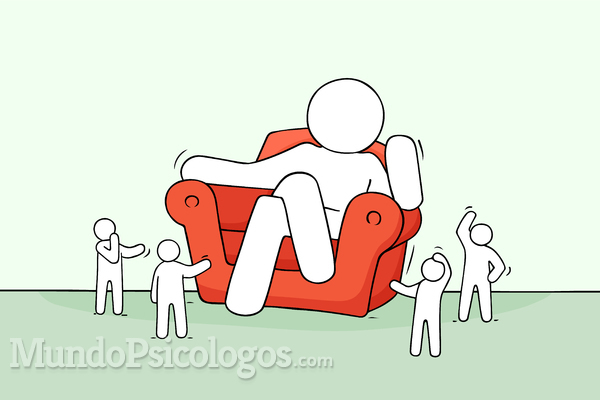“Arrogance is detected when we appreciate distant and contemptuous treatment towards the opinions, behaviors or ways of being of the other person”

This is one of the most heard phrases in consultation: “I wish I had the self-esteem that he/she has…”. However, that model that the patient envies is not always an example of self-affection. When we professionals scratch the surface we find a reality that is little talked about: some people confuse arrogance with self-esteem.
Self-esteem is the evaluative component of self-concept: self-concept is how we define ourselves (e.g. intelligent, curious, skilled, etc.), and self-esteem is how that interpretation makes us feel (e.g. proud, happy, maladjusted). , etc.)
Starting from this basis, it is obvious that it is not incompatible to love oneself and treat others with respect and education:
Pride:
- It is expressed aggressively (not to be confused with physical aggression or direct insult): it raises the tone, does not respect speaking turns, uses phrases that ridicule your thoughts (e.g. “that’s nonsense!”).
- His non-verbal communication indicates superiority: he smiles ironically at your arguments, moves his eyes in a sign of fatigue while listening to you, uses his hands to emit signs of “contempt” when you try to reason your explanation, etc.
- He constantly talks about himself: the conversation revolves around his life, his work, his thoughts, and his personal abilities. The time he spends on himself is noticeably greater than that of his interlocutor.
- Avoids criticism: he becomes defensive if he receives any verbalization that he understands as criticism, regardless of whether it is constructive. He looks for scapegoats for not feeling capable of facing responsibility for his actions (consciously or unconsciously).
- He constantly prioritizes his needs: he will think first of himself and what he wants, acting accordingly, unless he has no other choice (sometimes, to take care of our environment, we must postpone a moment of “happiness” of our own, in favor of the unaffiliated).
- He confuses sincerity with rudeness: he thinks that he must express his thoughts at all times, not adapting to the context and sensitivity of his interlocutor. When he gives his opinion, he does not usually use tact despite knowing how the other person may react.
Self-esteem:
- It is expressed assertively: the person with self-esteem does not remain silent (passivity), but neither does he impose his opinion (aggressiveness). She feels comfortable enough with herself to be able to respect differences in thought.
- His non-verbal communication is relaxed: he listens to understand and form his own opinion, not to answer and demonstrate what he knows.
- He is interested in others: he asks questions to find out the opinion of others, their circumstances and/or their emotional state.
- Face criticism: receive the information, analyze it, and extract those parts of the argument that may be logical, in order to learn from your mistakes.
- Prioritizes your well-being: but this also depends on your environment being well cared for, alternating personal care with that of others.
- He expresses himself tactfully: he is aware that certain issues are especially sensitive and must be approached with great respect.
Self-esteem can and should be worked on, but it is necessary to know how to differentiate it from arrogance so as not to end up adapting characteristics related to arrogance. Arrogance is not worthy of envy, while healthy self-esteem is a model that can inspire work on oneself.
“Pride is not greatness, but swelling; and what is swollen seems great but is not healthy” (Leonardo Murialdo).
We know how to help you improve your self-esteem; Contact us, we will be happy to assist you.









